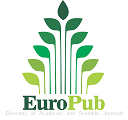Exploring the Potential of Omega-3 Enriched Egg Industry in Indonesia: Production, Consumer Demand, and Competitiveness
Abstrak
People are worried about the health impacts of the cholesterol contained in egg. Various studies show that adding omega-3 to laying feed or drinking water will produce omega-3 eggs that are low in cholesterol. This research aims to determine the potential for developing the omega-3 egg industry
in Indonesia. Secondary data (from BPS and related literature), and primary data (from interviewed with sample farmers) were analyzed using revenue cost (R/C) ratio, willingness to Pay (WTP) and descriptives analysis. The findings showed that farmer produced omega-3 eggs from small scale (100 birds) to large scale (50,000 birds). Farmer introduce omega-3 through feed in the form of (1) a mixture of salmon oil with vegetable oil, (2) maggots (Hermetia illucens), and (3) processed fish waste. Each provided R/C ratios of 1.10, 1.34, and 1.52. The competitiveness of the omega-3 egg industry in Indonesia is quite strong, supported by (1) abundant sources of omega-3 supplement feed, (2) increasing demand for omega-3 eggs, (3) supported by feed and the pullet industry (4) low competition of omega-3 eggs producer, and (5) support for stunting reduction programs through protein consumption.















